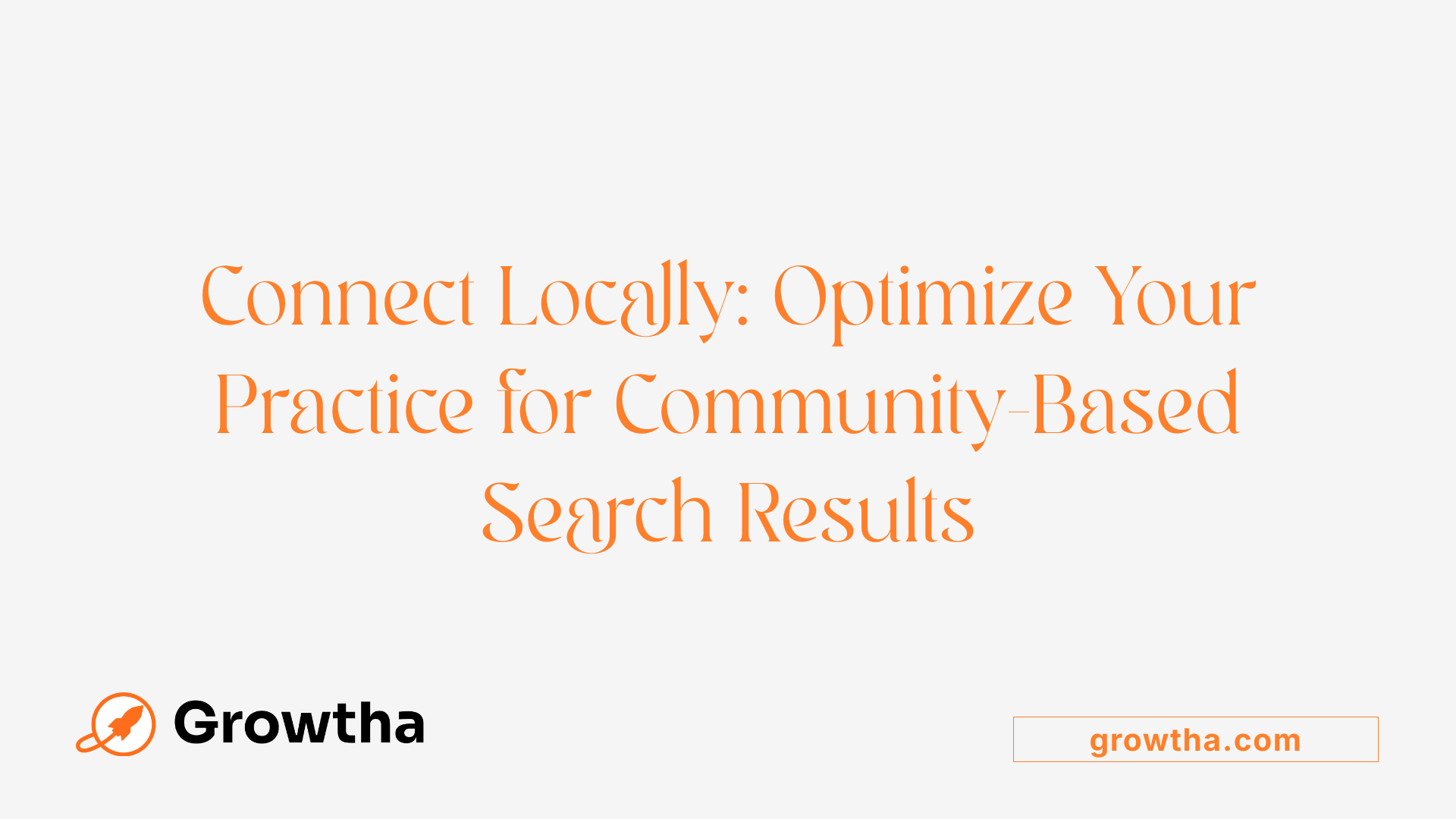How to Create SEO-Friendly Blog Content for Mental Health Clinics
Unlocking Online Success: Strategies for Mental Health Clinics


How to Create SEO-Friendly Blog Content for Mental Health Clinics
Establishing a Strong Online Presence for Therapy Practices
In today's digital landscape, mental health clinics must harness the power of SEO to reach and assist more individuals seeking support. Creating SEO-friendly blog content is essential, but it requires a strategic, empathetic, and well-informed approach. This guide explores the best practices for crafting and optimizing content that elevates your clinic's visibility while maintaining ethical integrity and delivering genuine value.
Understanding the Foundations of SEO for Mental Health Clinics

The importance of SEO in mental health marketing
Search Engine Optimization (SEO) plays a vital role in the marketing efforts of mental health clinics. With a growing number of potential clients searching online for therapy and mental health support, having a well-optimized website significantly increases the chances of being found. Effective SEO ensures that your practice appears prominently in search engine results, making it easier for prospective clients to discover your services.
This visibility is crucial because most people tend to click on the top results when looking for therapeutic help. Therefore, a strong SEO foundation helps your practice stand out in a competitive digital landscape. It also fosters trust, as appearing on the first page of search results is often associated with credibility and authority.
How SEO increases visibility and patient engagement
SEO strategies help your practice reach the right audience by aligning your website content with the search terms potential clients use. When your site ranks higher for relevant keywords, it attracts more organic traffic — visitors actively looking for the services you provide.
Increased visibility translates into more inquiries, consultations, and appointments. Additionally, a well-optimized website enhances user experience, making it easier for visitors to find information, book sessions, or contact your practice. Enhancing accessibility through mobile-friendly design and fast loading speeds ensures that visitors stay engaged and have a positive impression of your practice.
Ultimately, SEO not only boosts your practice’s online presence but also facilitates meaningful connections with individuals seeking mental health support.
Key components of effective SEO strategies
Developing an effective SEO strategy involves several core elements:
| Component | Description | Why It Matters |
|---|---|---|
| Keyword Research | Identifying the words and phrases potential clients search for | Helps create targeted content that matches user intent |
| On-Page Optimization | Incorporating keywords into titles, meta descriptions, headers, and content | Improves search engine rankings and relevance |
| Quality Content Creation | Producing helpful articles, videos, and resources | Builds authority, trust, and engagement |
| Local SEO | Optimizing for location-based searches | Attracts nearby clients and increases visibility in local communities |
| Website Technical Health | Ensuring fast load times, mobile responsiveness, HTTPS security | Enhances user experience and search rankings |
| Backlink Building | Gaining links from reputable sources | Boosts site authority and credibility |
| Regular Monitoring and Updating | Tracking performance and refining strategies | Ensures sustained growth and adaptability |
Applying these components diligently creates a robust SEO foundation that helps mental health practices thrive online.
How to create and optimize content in the mental health niche
Creating content that resonates with your audience involves understanding their needs and questions. Start with thorough keyword research to identify terms your potential clients are searching for, including both broad and long-tail phrases like “anxiety therapy techniques” or “counseling for stress in [city].”
Ensure your content is empathetic, accessible, and easy to understand. Incorporate keywords naturally in your headlines, subheadings, and throughout the body. Use clear, concise language and structure your content with short paragraphs and bullet points for easy scanning.
In addition to written content, multimedia such as images and videos with descriptive ALT text enhance engagement and SEO. Optimizing these elements for fast loading speeds and accessibility benefits both users and search engines.
Don’t forget to include internal links to other relevant pages on your site and authoritative external references. This internal and external linking improves navigation and establishes credibility.
Finally, update your content regularly to ensure it remains relevant with recent research, trends, and best practices. Consistent, compassionate, and value-driven content not only boosts SEO but also builds trust with your audience.
Best practices for structuring and creating content for mental health blogs
Structuring your mental health blog effectively enhances readability and SEO. Follow these best practices:
- Use descriptive, keyword-rich headings and subheadings (H1, H2, H3)
- Begin with an engaging introduction that clearly states the article's purpose
- Organize information logically in the body, using lists and bullet points for clarity
- Write in a friendly, accessible tone that reflects empathy and professionalism
- Incorporate recent research, credible hyperlinks, and citations to support your content
- Conclude with practical advice or calls-to-action to encourage further engagement
Content should be well-crafted to meet user intent, providing valuable answers to common questions such as “What happens in a therapy session?” or “How can I manage stress better?”
Regularly updating blogs about mental health topics like resilience, coping strategies, and therapy tips helps maintain relevance and authority. Promoting blog posts via social media channels expands the reach, fostering community and trust.
Tools and strategies for optimizing mental health content for search engines
Effective optimization starts with research. Use tools like Google Keyword Planner, SEMrush, or Ahrefs to find relevant keywords, especially long-tail and local terms. These tailored keywords form the backbone of your content strategy.
Implement on-page SEO best practices: include keywords naturally in your titles, headers, meta descriptions, and image alt texts. Optimize your website’s technical aspects, such as improving load speeds with compressed images, ensuring mobile responsiveness, and securing your site with HTTPS.
Create high-quality, comprehensive content that genuinely helps your audience, addressing their concerns and questions. Adding multimedia like videos and infographics can improve engagement and dwell time, which search engines favor.
Building backlinks through guest blogging, partnerships, and community involvement increases your site’s authority. Local SEO tactics—such as claiming your Google My Business profile, ensuring NAP consistency (name, address, phone number), and gathering positive reviews—are essential for attracting nearby clients.
Tracking performance with analytics tools allows you to refine your strategy, identify what's working, and adjust accordingly. Continuous optimization ensures your content remains visible and relevant.
By combining these strategies, mental health professionals can effectively improve their website’s SEO and attract the right audience.
Conducting keyword research and optimizing content for mental health topics
Begin with comprehensive keyword research using Google Keyword Planner, SEMrush, or Ahrefs. Target both broad terms like “therapy options” and specific long-tail keywords such as “EMDR therapy for trauma in [city].”
Understand the search intent behind these keywords: informational, transactional, or navigational. Tailor your content to meet the needs implied by each intent.
Incorporate your chosen keywords naturally into titles, headings, meta descriptions, and throughout your content. Ensure your website structure supports easy navigation and quick access to relevant pages.
Focus on creating authoritative, empathetic content that provides real value, such as coping strategies, FAQs, and psychoeducational articles. Regularly update your content based on current trends, scientific evidence, and client needs.
Engaging in local SEO—by including location-based keywords, managing your Google My Business profile, and encouraging reviews—enhances visibility within your geographic area.
Consistently monitor your website’s performance through analytics tools. Refine your keyword choices and content strategies based on data insights, ensuring your site remains competitive and impactful.
Technical SEO considerations for mental health websites
Technical SEO is critical for ensuring your website ranks well and offers a positive user experience. Key considerations include:
- Speed: Optimize images, leverage browser caching, and minimize code to reduce load times.
- Mobile-Friendliness: Use responsive themes and test your site on mobile devices with Google’s Mobile-Friendly Test.
- HTTPS: Secure your site to protect user data, boosting trust and ranking.
- URL Structure: Use descriptive, keyword-rich URLs that are easy to read.
- Schema Markup: Implement structured data to enhance search listings with rich snippets.
- Internal Linking: Organize your content with logical internal links to improve navigation and crawlability.
- Fix Broken Links: Regularly audit your site for broken or outdated links that hinder user experience and search rankings.
Maintaining a technically sound website ensures search engines can crawl, index, and rank your pages effectively, leading to better online visibility.
Effective SEO strategies for mental health practice blogs
A successful blog strategy combines keyword research with high-quality, targeted content. Incorporate relevant keywords naturally into your posts, focusing on popular and niche terms.
Optimize on-page elements: use compelling meta titles and descriptions, headers, and concise URLs. Ensure your website is mobile-friendly and loads quickly.
Build backlinks through guest posts, collaborations, and sharing valuable resources. Local SEO tactics, such as optimizing your Google My Business profile and creating localized content, help attract nearby clients.
Consistently analyze your blog’s performance using Google Analytics and Search Console, adjusting your content and tactics to improve rankings and engagement over time.
Regularly refreshing older posts with updated information and new insights keeps your blog relevant and authoritative.
Ethical considerations in SEO content creation
While SEO is essential, maintaining ethical standards is equally important. Always prioritize accuracy, evidence-based information, and professional integrity. Avoid sensationalism, exaggerated claims, or promises of quick fixes. Respect client confidentiality and privacy, especially in testimonials or reviews.
Promote inclusivity and cultural sensitivity in your content. Be transparent about your qualifications and avoid manipulative or shady marketing tactics. Upholding ethical standards builds trust with your audience and aligns with your professional responsibilities.
Improving online visibility and search rankings
Achieving higher rankings involves a multi-faceted approach:
- Conduct thorough keyword research to target relevant terms.
- Optimize website content and structure with on-page SEO best practices.
- Ensure technical SEO health with fast load times, mobile compatibility, and security.
- Enhance local SEO through Google My Business, reviews, and localized content.
- Build authoritative backlinks from reputable sources.
- Monitor performance regularly and adapt strategies based on analytics insights.
Implementing these practices consistently can significantly increase your practice’s online presence, attract more local patients, and establish lasting trust in your community.
Local SEO: Connecting with Your Community
 Optimizing your online presence for local search is vital for mental health professionals seeking to attract nearby clients. One of the most effective strategies is to fully utilize your Google My Business (GMB) profile. Ensure that all information, including your practice’s name, address, phone number (NAP), hours, and services, is accurate and consistent across all platforms. Regularly update your GMB with fresh photos, posts, and special announcements to engage your audience.
Optimizing your online presence for local search is vital for mental health professionals seeking to attract nearby clients. One of the most effective strategies is to fully utilize your Google My Business (GMB) profile. Ensure that all information, including your practice’s name, address, phone number (NAP), hours, and services, is accurate and consistent across all platforms. Regularly update your GMB with fresh photos, posts, and special announcements to engage your audience.
Using location-specific keywords within your website content is another crucial step. Incorporate terms like the city, neighborhood, or region you serve organically into your page titles, headers, and service descriptions. This native integration helps search engines connect your practice to local queries.
Collecting and managing reviews adds credibility and boosts your local search rankings. Encourage satisfied clients to leave honest feedback on your GMB profile and other review sites like Yelp. Respond professionally to reviews, whether positive or negative, demonstrating commitment to client satisfaction.
Creating location-specific content tailored to your community can further strengthen your local SEO. Write blog posts, FAQs, or landing pages focused on local mental health concerns, community events, or region-specific resources. For example, discuss local support groups, hospitals, or upcoming wellness events relevant to your area.
| Practice Area | SEO Tactic | Details |
|---|---|---|
| Google My Business | Profile Optimization | Update information regularly, add photos, and post updates |
| Location Keywords | Keyword Integration | Use in titles, headers, and service pages |
| Reviews | Manage and Respond | Encourage reviews and reply thoughtfully |
| Local Content | Create and Share | Focus on community-specific topics |
By applying these local SEO practices, therapy practices can improve visibility specifically within their community, making it easier for potential clients to find and trust their services. Consistent efforts in optimizing your local online presence not only increase leads but also foster stronger community relationships.
Content Length and Quality: Finding the Right Balance

What are the best practices for creating and optimizing content in the mental health niche?
Creating and optimizing content for a mental health website involves a thoughtful, strategic approach focused on understanding the specific needs and questions of your target audience. Start with comprehensive keyword research to find out what potential clients are searching for. Incorporate these keywords naturally into your website content, including headlines, meta tags, and within the text itself.
Producing high-quality, empathetic, and informative content is essential. This includes providing valuable tips, psychoeducational materials, resources, and guidance—always respecting client confidentiality and licensing boundaries. Feel-good, accessible language resonates best with audiences who may be overwhelmed or distressed.
Leverage multiple platforms like blogs, social media, and videos to broaden your reach. Repurposing content across these formats ensures consistency and accessibility, helping to meet different preferences.
An easy-to-navigate website with clear calls-to-action, regularly updated content, and credible backlinks enhances user trust and search engine ranking. Practicing ongoing monitoring of site engagement metrics and fostering community interaction further reinforce your online presence. Responding to reviews and maintaining a detailed local directory listing help build credibility.
Ultimately, sustained efforts in keyword optimization, content creation, and community engagement position your practice as a trusted resource, attracting and converting prospective clients.
What are best practices for structuring and creating content for mental health blogs?
Effective mental health blogs adopt a clear, logical structure to improve readability and SEO. Use descriptive headings aligned with your target keywords to segment content into manageable parts. Headings like H1 for the main title, H2s for different sections, and H3s for detailed subsections help organize complex information.
Begin with an engaging introduction that states the purpose of the post. Follow with informative body sections that address common questions, provide practical advice, and introduce recent research or expert opinions. Conclude with a succinct summary or call-to-action.
Writing should prioritize accessibility—use simple, person-first language that resonates with diverse readers. Short paragraphs, bullet points, and numbered lists make the content easier to scan.
Incorporate credible sources, hyperlinks, and evidence-based information to enhance authority and trust. Regularly updating your content on mental health topics like stress management, resilience, or therapeutic innovations keeps your blog relevant.
Promotion is also crucial. Share your blog posts on social media, online communities, and newsletters to increase visibility and engagement. A well-structured, credible, and engaging blog can foster trust and establish your practice as an authority in mental health.
What tools and strategies can aid in optimizing mental health content for search engines?
Optimizing your mental health content starts with thorough keyword research. Use tools like Google Keyword Planner, SEMrush, Ahrefs, or Exploding Topics to find relevant, high-intent keywords, particularly long-tail phrases such as “coping strategies for anxiety” or “benefits of cognitive behavioral therapy.”
Once you identify these keywords, incorporate them naturally into your webpage elements: titles, headers, meta descriptions, and throughout your content. Pay attention to image optimization by adding descriptive ALT text and using responsive images for mobile friendliness.
Creating high-quality, comprehensive content is essential. This could include detailed articles, videos, infographics, and downloadable guides. Ensuring your site is mobile-responsive, has fast loading speeds, and uses HTTPS security enhances both user experience and SEO rankings.
Local SEO is especially important for therapists. Claim and optimize your Google My Business profile, maintain consistent NAP (name, address, phone number) information across all directories, and encourage satisfied clients to leave reviews. These tactics boost visibility in local search results, making it easier for nearby clients to find your practice.
In addition, build backlinks by sharing your expertise through guest posts, contributing to reputable platforms, and engaging with the mental health community via social media and forums. Using analytics tools like Google Analytics and Search Console allows for ongoing performance tracking and refinement of your SEO strategies.
By consistently applying these practices, your mental health content can rank higher in search results, attract your ideal clients, and help grow your practice.
| Aspect | Best Practices | Details |
|---|---|---|
| Content Quality | High, empathetic, valuable | Focus on psychoeducation, resource sharing, and addressing client needs |
| Content Length | Around 1,200–2,000 words | Longer, detailed posts tend to rank better |
| Keyword Integration | Naturally placed | Titles, meta tags, headings, content, URLs |
| Site Technicals | Speed, mobile, security | Use responsive design, optimize images, HTTPS |
| Local SEO | Google My Business, NAP, reviews | Essential for nearby client reach |
| Content Strategy | Regular updates, diverse formats | Blogs, videos, social media, downloadable content |
| Link Building | Credible sources, back-links | Guest blogging, media features, online directories |
| Monitoring | Analytics tools | Google Analytics, Search Console |
Focusing on these elements will help you craft effective, SEO-optimized content that elevates your mental health practice in search engine rankings.
Sustaining Growth Through Continuous SEO Optimization
Mastering SEO for mental health clinics is an ongoing process that demands dedication, ethical awareness, and adaptability. Continuously updating content based on latest search trends, leveraging local SEO, and fostering authentic engagement with your community will help your clinic stand out. Employ the strategies highlighted in this guide to enhance your online presence, build trust, and connect with more individuals seeking support. Remember, combining technical expertise with genuine empathy is the key to a successful, impactful mental health practice in the digital age.
References
- Grow Your Practice! Tips on SEO for Mental Health Professionals
- How to Write SEO-Friendly Blog Posts for Therapists - Humanly
- SEO for Therapists: The Ultimate Guide - Talkspace
- SEO Starter Pack for Mental Health Providers - Madison Miles Media
- How to Create SEO-Friendly Content for Your Therapy Practice
- SEO for therapists - A detailed guide with tips and examples
- Mental Health Blogging for Therapists: 101 - Go Bloom Creative
- SEO For Therapists In 2024: A Comprehensive Guide - Therapy Flow







